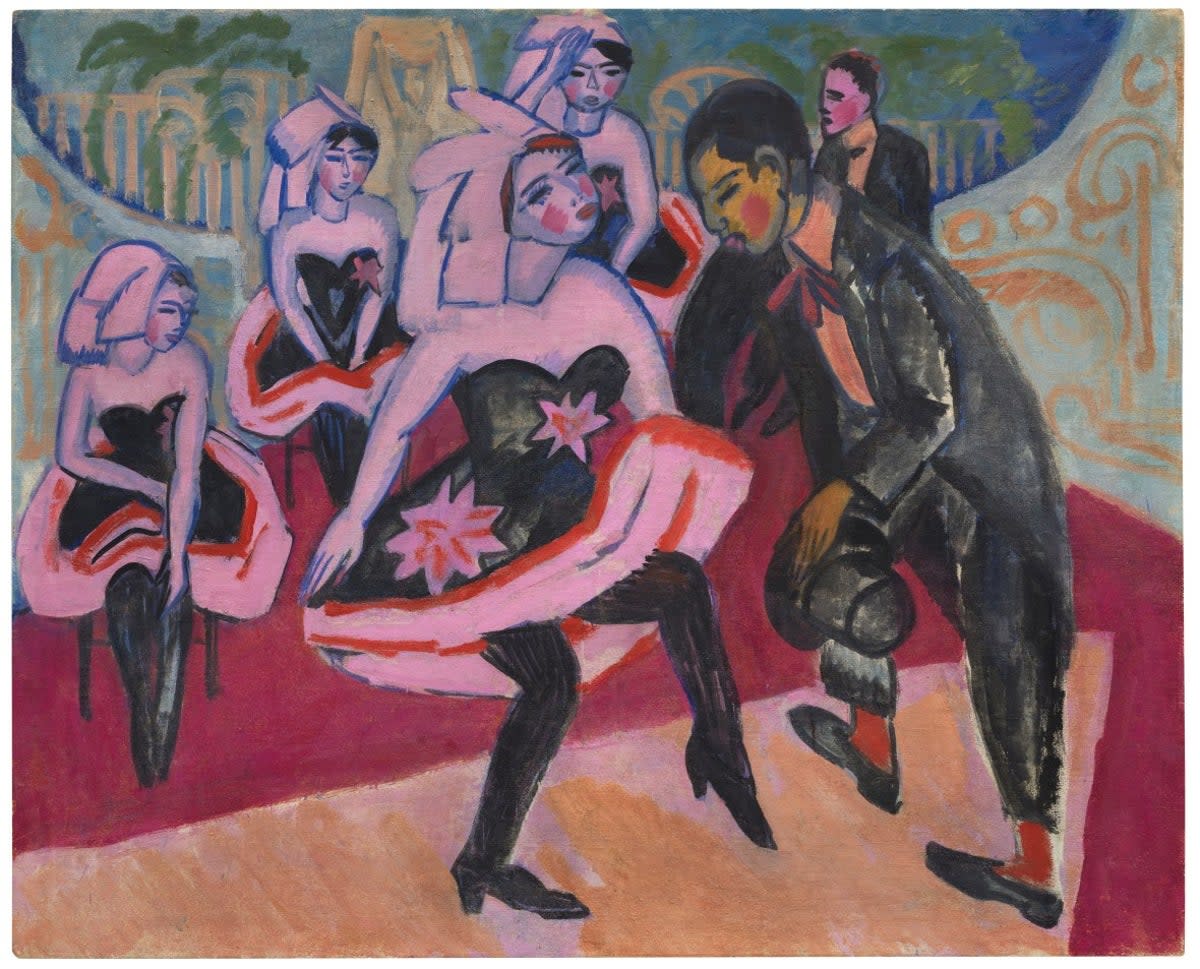Ernst Ludwig Kirchner painting banned by Nazis and presumed lost sells for £6m at auction

A painting banned by the Nazis that has been missing for more than 80 years has been recovered and sold for seven million Euros (£6 million) at an auction.
Ernst Ludwig Kirchner’s 1911 work Tanz im Varieté was included on the National Socialist “degenerate art” list - which saw more than 600 of his works sold or destroyed.
Only black and white photos of the work were thought to exist and art buyers were shocked when it was presented before them at Berlin’s Ketterer Kunst auction house.
The auction house said: “The work has literally been waiting in the wings of art history for a century to step into the limelight.
“[The painting] is a homage to the golden age of entertainers who, before the First World War, sent audiences into ecstasy with their show dances.”
Kirchner died in Switzerland in 1938 aged 58. The death was recorded at the time as a suicide, but it has since been established that he may have been shot by someone else.
Tanz im Varieté (which translates as ‘dance in the variety show’) depicts two figures, a black man and white woman, painted with abstract strokes dancing in a club.
French soldiers discovered the painting hidden on a farm in southern Germany as they closed in on Hitler’s bunker in 1945.
The soldiers fired a shot through one of the dancers’ heads and bayoneted another through the stomach but left the work in the barn.
The 120x145 cm work was last exhibited in 1923.
Ketterer Kunst has not said who the painting was sold to.
It is thought that Kirchner met his future partner and fiancee Erna Schilling at a dance, similar to the one depicted in the painting,
Art historian Marietta Piekenbrock said: “Tanz im Varieté is a homage to the golden age of entertainers who, before the First World War, sent audiences into ecstasy with their show dances.
“The audiences of the German Empire craved sensational acts, show stars of international renown.”


